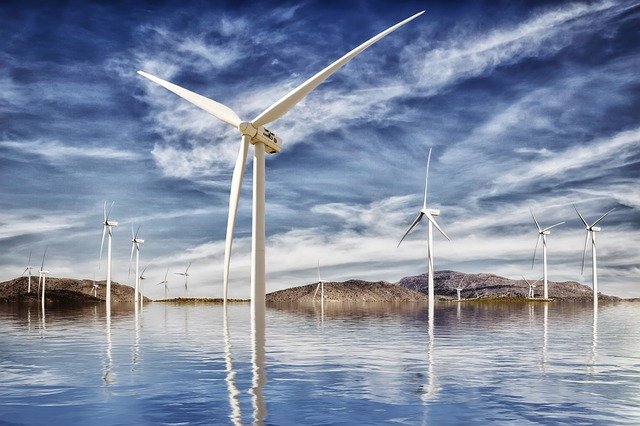
UK to remain Europe’s largest Offshore Wind market through 2030
Clarksons Research has today released onto its Renewables Intelligence Network (RIN) platform a new briefing profiling the UK’s offshore wind sector, including a capacity forecast out to 2030, coverage of the upcoming subsidy auction for offshore wind projects in the UK and intelligence on vessel deployment at wind farms off the country. Reviewing the data, Steve Gordon, Managing Director of Clarksons Research commented:
- Our projections suggest the UK will remain Europe’s largest offshore wind market through 2030, with capacity projected to quadruple to 42.7 GW (May-22: 11.4 GW) and the number of active turbines doubling to 4,700 (May-22: 2,400). Following recent UK government plans to accelerate the permitting process however (see below), there is upside to this projection with the UK government now targeting 50 GW by 2030.
- Capacity expansion in the UK through 2030 to be underpinned by the southern North Sea (projected to reach 24.2 GW, up 278% from today’s 6.4 GW, and Scotland (projected to reach 12.8 GW, up almost 7-fold from today’s 1.9 GW, and account for 30% of UK capacity), while the Celtic Sea is set to see a significant build-out of floating offshore wind capacity towards the end of the decade (1.1 GW of floating capacity by 2030).
- Installed offshore wind capacity off the UK is set to grow by 30% in 2022, with 3.2 GW of capacity added (one third of global capacity growth) including the world’s largest wind farm (Orsted’s 1.4 GW Hornsea Project Two), to reach 13.7 GW.
- Expansion of the UK’s offshore wind sector is set to be supported by the UK government’s recently announced ambition to increase the nation’s offshore wind target to 50 GW by 2030. The Contracts for Difference (CfD) scheme also appears set to support the further expansion of offshore wind capacity in the UK, with the fourth CfD allocation round set to see 12 GW of renewables capacity awarded subsidies later this year.
- There have been 12 Wind Turbine Installation Vessels (WTIV) active in UK waters over the past 12 months, and demand for installation units looks set to remain strong over the coming years with 2,300 turbines projected to be installed off the UK through 2030. Shipping companies operating WTIVs in UK waters over the past 12 months include DEME Offshore (3 vessels), ZITON (3 vessels) and Cadeler (2 vessels).
- The UK remains the world’s largest dedicated Construction and Service Operation Vessel (C/SOV) market, with 11 units currently operating at farms off the UK. With demand for C/SOVs to support the construction and maintenance of farms further from shore set to increase, a total of 9 C/SOVs currently on order (31% of the global C/SOV orderbook) have been chartered to work at a UK farm once delivered. Vessel owners currently operating C/SOVs at windfarms off the UK include ESVAGT (4 vessels), Acta Marine (2 vessels) and Edda Wind (2 vessels). We estimate there are >250 active Crew Transfer Vessels (CTV) supporting windfarm operations across the UK.
- Efforts to be “green through the supply chain” continue, with recent newbuildings including battery packs, hydrogen “ready” and methanol. Shoreside investment will also be needed to facilitate the fuelling transition for the offshore wind “fleet”. The top CTV engine manufacturers are MTU (20% of the UK CTV fleet), Caterpillar (18%) and Volvo Penta (18%).
- Investment in the UK’s offshore wind supply chain has strengthened recently, and looks set to see further growth in the coming years. Notably, GE has begun the construction of its new blade factory in Teesside which will produce the turbine blades for the 3.6 GW Dogger Bank project, while SeAH has signed a binding agreement with Teesside to build a £260m monopile factory for the production of foundations for Orsted’s Hornsea Project Three.
- The broader offshore wind industry looks set to continue its exciting growth phase and our long-term scenarios suggest offshore wind will play a vital role in the Energy Transition and may provide between 6% and 9% of global energy supply by 2050 (today offshore wind produces just 0.3% today: see the Clarksons Research Energy Transition Model for more details). Globally our projections suggest 240 GW and 30,000 active turbines by 2030 (today there is 51.7 GW and 11,000 turbines). China has become the largest offshore wind sector by installed capacity (overtaking the UK in 2021 and with 23.4 GW of capacity today), with strong growth expected in the US, Taiwan and South Korea as the offshore wind industry becomes increasingly international.
Renewables Intelligence Network (RIN) – is a powerful new offering from Clarksons Research covering both macro and granular data, intelligence and forecasts around: long term Energy Transition modelling; project tracking of offshore wind farms; detailed country briefs and forecasts; profiles of all developers involved in offshore renewables; the offshore “wind” fleet and the vessels, owners and yards involved; green technology across this fleet; dashboard analytics; dynamic mapping and deployment analysis; port analysis; tidal, hydrogen and carbon capture.

Clarksons Research, the data and analytics arm of Clarksons, are market leaders in the provision of independent data, intelligence and analysis around shipping, trade, offshore and maritime energy transition. Millions of data points are processed and analysed each day to provide trusted and insightful intelligence to thousands of organisations across maritime.
Information Source: Read More
Oil and gas, press , | Energy, Climate, Renewable, Wind, Biomass, Sustainability, Oil Price, LPG, Solar, Electric,
Submitted by: Apeksha Mehta, Department Secretary | Sales, Admin & Accounts | Clarkson Research Services Limited
Email: apeksha.mehta@clarksons.com
Group Email: sales.crs@clarksons.com


